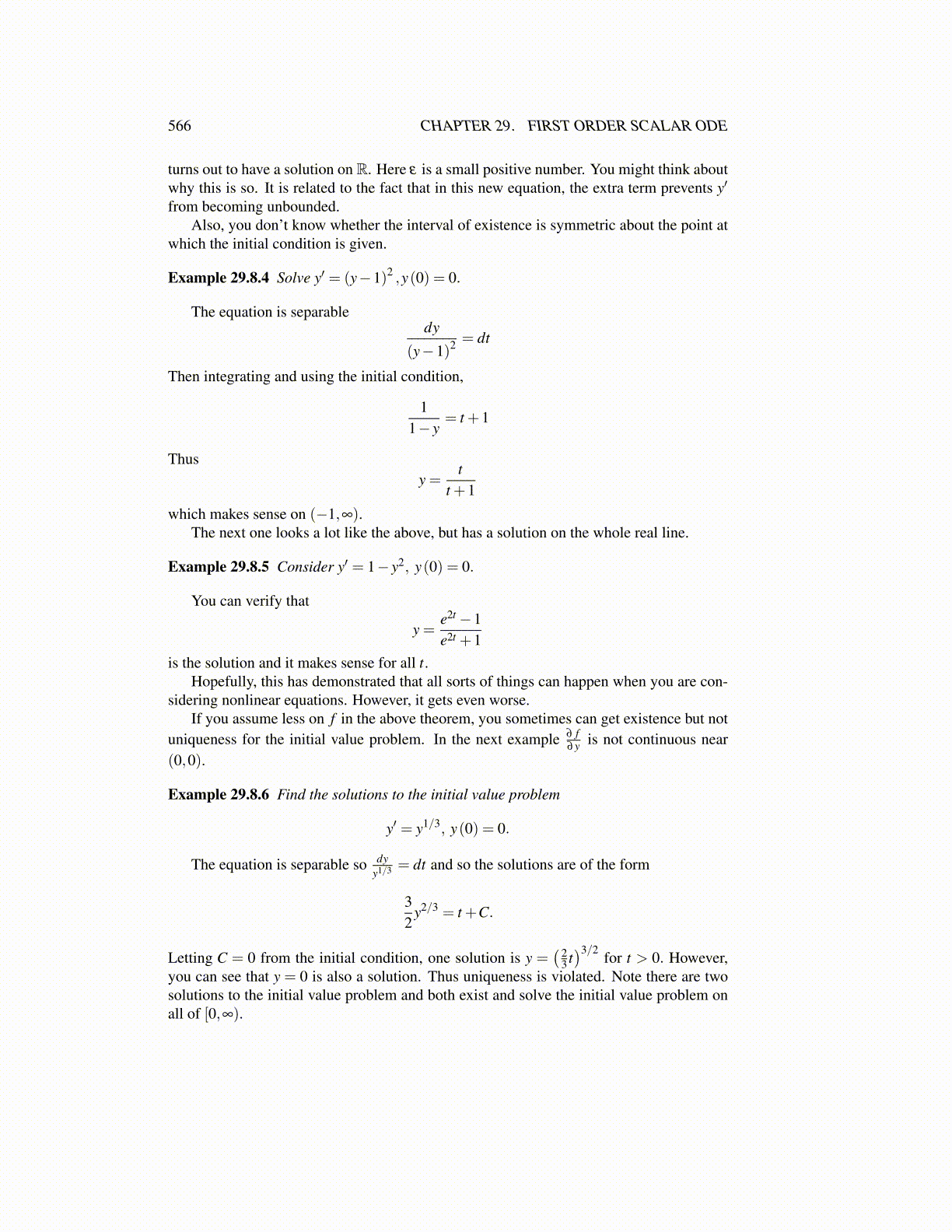
566 CHAPTER 29. FIRST ORDER SCALAR ODE
turns out to have a solution on R. Here ε is a small positive number. You might think aboutwhy this is so. It is related to the fact that in this new equation, the extra term prevents y′
from becoming unbounded.Also, you don’t know whether the interval of existence is symmetric about the point at
which the initial condition is given.
Example 29.8.4 Solve y′ = (y−1)2 ,y(0) = 0.
The equation is separabledy
(y−1)2 = dt
Then integrating and using the initial condition,
11− y
= t +1
Thusy =
tt +1
which makes sense on (−1,∞).The next one looks a lot like the above, but has a solution on the whole real line.
Example 29.8.5 Consider y′ = 1− y2, y(0) = 0.
You can verify that
y =e2t −1e2t +1
is the solution and it makes sense for all t.Hopefully, this has demonstrated that all sorts of things can happen when you are con-
sidering nonlinear equations. However, it gets even worse.If you assume less on f in the above theorem, you sometimes can get existence but not
uniqueness for the initial value problem. In the next example ∂ f∂y is not continuous near
(0,0).
Example 29.8.6 Find the solutions to the initial value problem
y′ = y1/3, y(0) = 0.
The equation is separable so dyy1/3 = dt and so the solutions are of the form
32
y2/3 = t +C.
Letting C = 0 from the initial condition, one solution is y =( 2
3 t)3/2
for t > 0. However,you can see that y = 0 is also a solution. Thus uniqueness is violated. Note there are twosolutions to the initial value problem and both exist and solve the initial value problem onall of [0,∞).